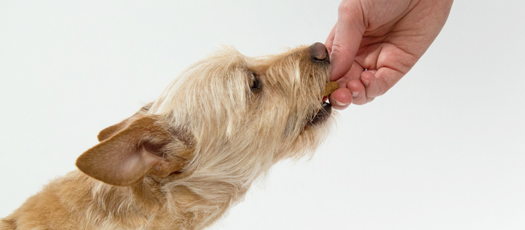
Walking without a leash – how to safely call back your dog
If your four-legged friend comes right away when you call, that’s a good start for a relaxing walk. But the reality is often different – the two-legged party’s calls fade away, unanswered. Usually it’s not because the dog is disobedient, but because it hasn’t had an opportunity to learn what the call means.
How can the dog learn?
First of all, you have to realize that dogs do not understand our language. Without training, there is no way for a dog to know what you mean when you say, “Come,” or any other command. It only learns the meaning of the word or the significance of a dog whistle if it hears the word or whistle many times while it is coming toward you. That is the only way to connect the signal and the behavior in the dog’s brain. Only then will your word or whistle cause the dog to come promptly and almost automatically – without needing to call it by name first.
In addition, it has to be worthwhile for your dog to come to you. For a long while, you will offer a reward each time, and later on every so often.
What you need
You’ll see – with a little bit of “equipment,” you can call back your dog, too! It will take:
– An unmistakable word or a specific whistle that the dog only hears when you are calling it. “Come,” along with the dog’s name, are not very effective because both are used in many other situations. But “Here,” for example, is a good choice.
– A reward that is very attractive to your four-legged friend. The best bet are tasty treats, because they can be offered at the right moment and in the right position.
– A distraction-free environment; inside your home is a fine place to start.
– Methodical, systematic training over the course of several weeks.
How it works
The goal is to make sure that your dog always comes to you right away, and quickly. For the sake of the learning process, it is important for the dog to be focused on you right from the beginning, even before you call. Practice a couple of times a day. Have another person hold the dog. Quickly walk several feet away, holding a treat, then turn toward the dog. For smaller or younger dogs, crouch down. Your four-legged friend now wants to come to you, and the other person lets go. At that moment, slowly call out your word, for instance “Heeere,” and hold both hands (along with the treat) in front of you, close to your body. That puts the dog right in front of you. Once the dog is there, let it eat out of one hand while at the same timeholding on to the dog’s collar with the other hand. Then leash the dog briefly.
The next steps
After about a week, call the dog inside the house and then in your yard (or another outdoor spot) a couple of times a day, without anyone else holding on. Make sure the dog is not asleep or intensely focused on something else. Outside locations are also ok, as long as there are no distractions. You can also practice with another person, calling the dog back and forth between you a few times. Increase the distance between you and the dog.
– Once this works every time, call the dog while you are out without any distractions, when the dog is not too far away from you. If you walk away a bit at the same time, that is also effective.
– If the dog can reliably “sit,” have it sit once it is back with you. At first, there will be an additional treat for this. Once the dog sits automatically, only provide one treat once it is sitting. Sitting is important, because the dog is “locked” in place. Then bike riders and joggers, etc., can go by without any trouble. The dog may only get up with your permission.
– If your four-legged friend is distracted, offer several tasty treats at once. Slowly increase the level of distraction and the “call distance”.
Why leash the dog after you call it back?
In everyday life, dogs are usually called when they are not supposed to go somewhere, or when you want them to move away from something. That’s why you want them to stay next to you for a bit once they come back. The best way to achieve this is to put the leash on while the dog is sitting. If you do it every time, the dog will come to expect it. Depending on the situation, you can then keep walking the dog on the leash or let it go off-leash again.
Look out for traps!
There are a couple of “KO” criteria that can quickly undo all of your training successes. Make sure to watch out for the following things:
– Do not use your signal to call the dog unless you are sure the dog can already follow the command. The more times your four-legged friend fails to come back quickly and directly, the harder it is to reinforce the lesson. Instead, get the dog’s attention by using an excited voice, running away, or clapping your hands.
– Call the dog in a timely manner. For instance, if there is a cat sitting in a meadow, be sure to call the dog by the time it notices the cat – not when the dog is already chasing it.
– Always have the dog come all the way to you and sit when you call. Many dog owners relax the rules over time, and then the call stops working, especially at times when it is really important.
– Never scold the dog for coming back slowly. It will associate the scolding with coming back to you. However, you also do not need to offer a reward.


